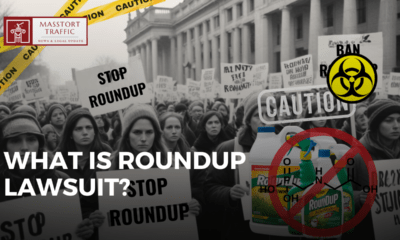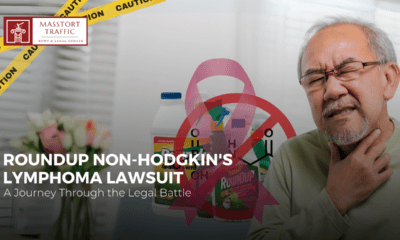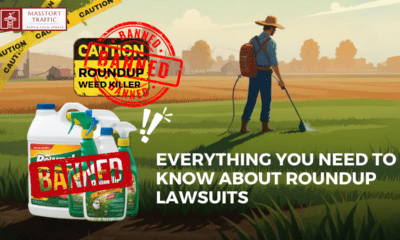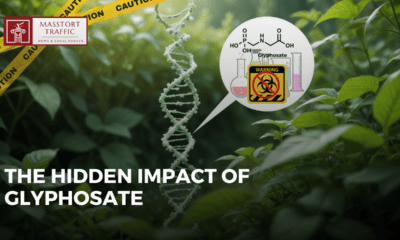Mass Torts Lawsuit
Zantac Lawsuit Health Risks, Legal Actions, and Settlement Updates 2024
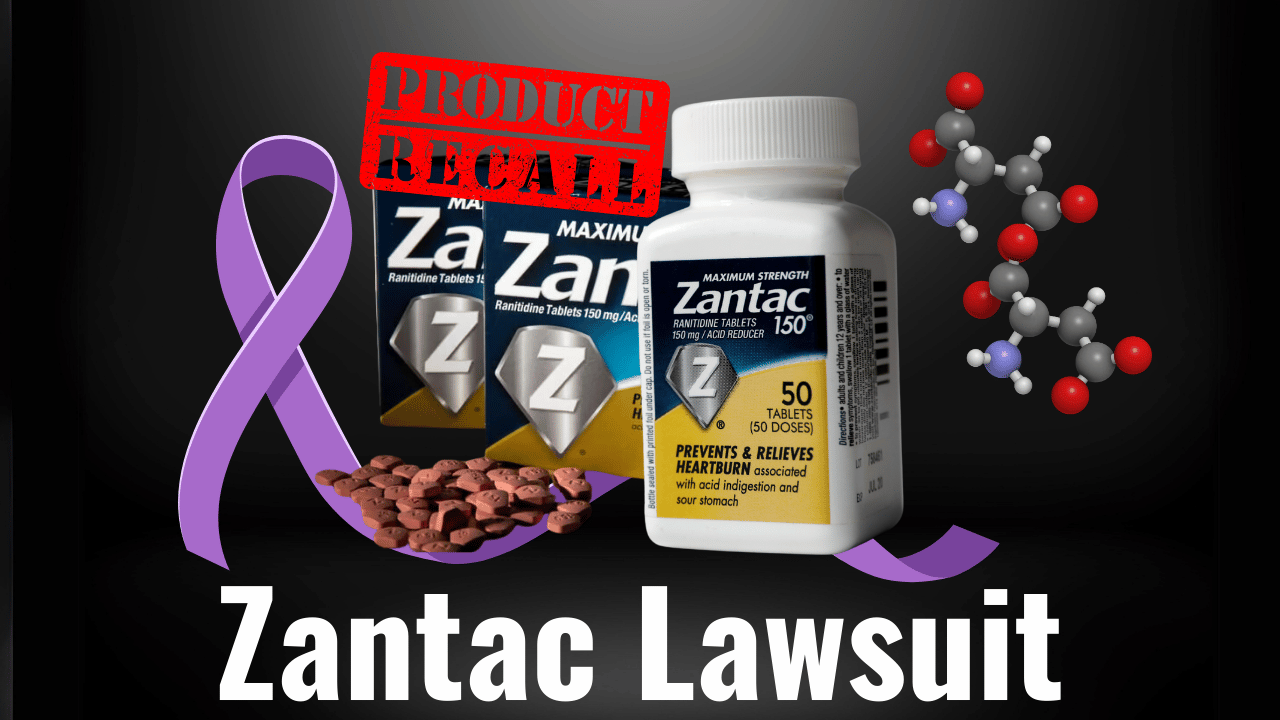
Introduction
The Zantac lawsuit is one of the most significant legal actions in recent pharmaceutical history, involving thousands of plaintiffs who allege that the popular heartburn medication, Zantac, led to severe health complications, including cancer. This blog delves into the background of the Zantac lawsuit, the discovery of its contamination with a probable human carcinogen, and the legal and health implications for those affected.
Table of Contents

Overview of the Zantac Lawsuit
The Zantac lawsuit emerged after the discovery that the medication, which contains ranitidine, could form N-Nitrosodimethylamine (NDMA), a potent carcinogen, under certain conditions. NDMA is known to increase the risk of several types of cancer, leading to widespread recalls and thousands of lawsuits against manufacturers like Sanofi and Pfizer. The Zantac lawsuit seeks to hold these companies accountable for failing to warn consumers about the potential dangers of their product.
Background on Ranitidine and NDMA Contamination
Ranitidine, the active ingredient in Zantac, was originally hailed as a breakthrough in treating heartburn and acid reflux. However, studies revealed that ranitidine could degrade and form NDMA, especially when exposed to heat or stored for long periods. NDMA is classified as a probable human carcinogen, meaning it could cause cancer in humans. This contamination is at the heart of the Zantac lawsuit, as plaintiffs claim they were unknowingly exposed to a harmful substance.
What Led to the Zantac Lawsuits?
Discovery of NDMA in Zantac
The discovery of NDMA in Zantac was first made public in 2019 when an independent laboratory, Valisure, detected high levels of the carcinogen in the medication. This finding triggered widespread concern, leading to further investigations by regulatory bodies worldwide.
9 RANITIDINE PRODUCTS CONTAINING NDMA
These are the nine (9) most common Zantac products and generic Zantac products containing ranitidine:
- Zantac 150 Tablets
- Zantac 150 Maximum Strength
- Zantac 150 Maximum Strength Cool Mint
- Zantac 75 Tablets
- Wal-Zan 150
- Wal-Zan 75
- Heartburn Relief
- Acid Reducer
- Acid Control
FDA’s Response and Drug Recalls
The U.S. Food and Drug Administration (FDA) warning says NDMA was found at levels between 3,000 to 26,000 times higher than FDA approved standards.
Following Valisure’s findings, the FDA conducted its tests and confirmed the presence of NDMA in Zantac. In response, the FDA issued a series of warnings, and by April 2020, it requested the removal of all Zantac products from the market. This move prompted the filing of numerous Zantac lawsuits, as consumers who had used the drug for years feared they were at risk of developing cancer.
Public Reaction and Legal Actions
The news of NDMA contamination in Zantac sparked outrage among consumers and prompted immediate legal actions. Thousands of Zantac lawsuits were filed, with plaintiffs seeking compensation for medical expenses, pain and suffering, and punitive damages against the drug’s manufacturers. The public’s reaction highlighted the widespread trust in over-the-counter medications and the devastating consequences when that trust is broken.
Health Risks Linked to Zantac
Cancers Associated with Zantac Use
The central claim in the Zantac lawsuit is that the drug’s contamination with NDMA increases the risk of several types of cancer. These include, but are not limited to, bladder cancer, stomach cancer, liver cancer, pancreatic cancer, and esophageal cancer. Plaintiffs in the Zantac lawsuit argue that they developed these cancers as a direct result of taking the drug.
Other Health Issues: PPH and Crohn’s Disease
In addition to cancer, some plaintiffs have linked Zantac use to other serious health conditions such as Primary Pulmonary Hypertension (PPH) and Crohn’s Disease. While the evidence connecting Zantac to these conditions is less established, they are nonetheless significant issues raised in the Zantac lawsuit.
Scientific Evidence and Medical Studies
Numerous studies have been conducted to explore the link between ranitidine, NDMA, and cancer. While some studies show a strong correlation, others are less conclusive. However, the prevailing scientific consensus acknowledges the potential risks, forming the basis for the Zantac lawsuit. Ongoing research continues to investigate the full extent of these risks.
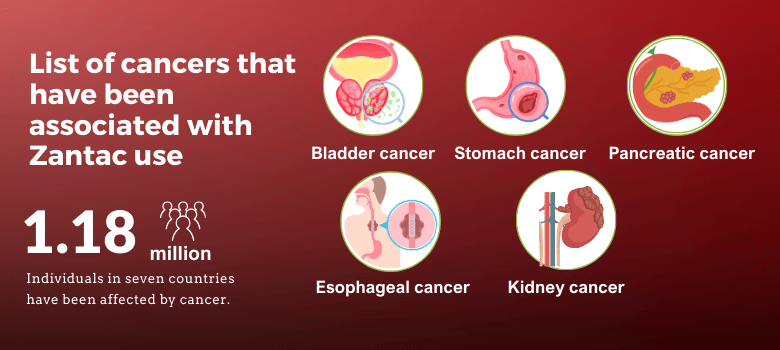
Notable Zantac Lawsuit Cases
Key Plaintiffs and Their Stories
Several high-profile cases have brought attention to the Zantac lawsuit. These cases often involve plaintiffs who took Zantac for years and later developed cancer. Their stories highlight the personal toll of the drug’s contamination and underscore the importance of holding pharmaceutical companies accountable.
High-Profile Settlements and Dismissals
Some Zantac lawsuits have already resulted in settlements, where companies like Sanofi and Pfizer agreed to compensate plaintiffs without admitting wrongdoing. However, not all cases have led to settlements; some have been dismissed, often due to lack of sufficient evidence linking Zantac use to cancer. These outcomes are crucial in shaping the broader legal landscape of the Zantac lawsuit.
Impact on Veterans and Military Personnel
Veterans and military personnel are a significant group affected by the Zantac lawsuit. Many veterans relied on Zantac for years to manage gastrointestinal issues, often prescribed by VA hospitals. As a result, they represent a large portion of the plaintiffs, with many suffering from cancers linked to NDMA exposure. Their inclusion in the Zantac lawsuit highlights the broader impact on those who served the country.
Legal Developments and Settlements
Timeline of Legal Actions and Court Decisions
The timeline of the Zantac lawsuit is marked by key legal milestones, including the initial discovery of NDMA, FDA warnings, and the filing of thousands of lawsuits. This section outlines the major court decisions and ongoing litigation efforts that continue to shape the Zantac lawsuit landscape.
Multidistrict Litigation (MDL) in Florida
Given the large number of Zantac lawsuits, many have been consolidated into a Multidistrict Litigation (MDL) in the Southern District of Florida. The MDL aims to streamline the legal process by handling pretrial proceedings collectively before returning cases to their original jurisdictions for trial. This consolidation is a critical development in the Zantac lawsuit, potentially leading to broader settlements or judgments.
Recent Settlements by Sanofi and Pfizer
Recently, some pharmaceutical companies involved in the Zantac lawsuit, including Sanofi and Pfizer, have reached settlements with plaintiffs. While the details of these settlements are often confidential, they represent a significant step in resolving some of the claims. These settlements could influence the outcome of other pending cases and the overall trajectory of the Zantac lawsuit.
Who Qualified for a Zantac Lawsuit?
Criteria for Eligibility
To qualify for a Zantac lawsuit, plaintiffs generally need to meet specific criteria. These include a confirmed diagnosis of cancer associated with NDMA exposure, a history of using Zantac, and evidence linking the medication to their illness. Eligibility criteria vary slightly depending on the jurisdiction and the specifics of each case.
Types of Cancer and Health Issues Covered
The Zantac lawsuit primarily covers cancers that have been scientifically linked to NDMA exposure, such as bladder, stomach, and liver cancers. However, some cases also involve other health issues, like PPH and Crohn’s Disease, which plaintiffs claim were exacerbated by Zantac use. Understanding the types of conditions covered is essential for those considering joining the Zantac lawsuit.
How to Determine Eligibility and Next Steps
Potential plaintiffs can determine their eligibility by consulting with a legal expert specializing in pharmaceutical litigation. These lawyers can review medical records, usage history, and other factors to assess the strength of a potential case. For those who qualify, the next steps often involve gathering evidence, filing a claim, and joining the Zantac lawsuit, either individually or as part of an MDL.

Understanding Zantac Litigation
Difference Between Individual Lawsuits and Class-Action
The Zantac lawsuit landscape includes both individual lawsuits and class-action suits. Individual lawsuits allow plaintiffs to pursue compensation based on their specific circumstances, while class-action suits consolidate many claims into one legal action. Understanding the differences can help plaintiffs decide which legal avenue best suits their situation.
Role of Lawyers and Legal Representation
Legal representation is crucial in the Zantac lawsuit, as experienced lawyers can navigate the complexities of pharmaceutical litigation. They assist plaintiffs in building a strong case, negotiating settlements, and ensuring that their rights are protected throughout the legal process. Choosing the right lawyer is a critical step in pursuing a Zantac lawsuit.
What Plaintiffs Need to Know About the Legal Process
The legal process for the Zantac lawsuit can be lengthy and complicated, involving multiple stages such as filing a claim, discovery, pretrial motions, and potentially a trial. Plaintiffs should be prepared for the time commitment and understand the possible outcomes, including settlements or court judgments. Staying informed and engaged in the process is key to a successful outcome.
Current Status of Zantac Lawsuits
Latest Updates on Pending Cases
As of now, the Zantac lawsuit continues to evolve, with new cases being filed and existing ones moving through the court system. Recent updates include ongoing trials, settlements, and decisions in the MDL. Staying informed about these developments is crucial for those involved or considering joining the Zantac lawsuit.
Future Outlook for Zantac Litigation
The future of the Zantac lawsuit remains uncertain, with potential for further settlements, additional lawsuits, and possibly new revelations about the drug’s safety. Legal experts predict that the litigation could continue for years, with significant implications for both plaintiffs and the pharmaceutical industry. Understanding the future outlook can help plaintiffs prepare for what lies ahead.
Resources for Affected Individuals
For those affected by the Zantac lawsuit, numerous resources are available, including legal assistance, support groups, and medical information. These resources can provide guidance on navigating the legal process, managing health concerns, and connecting with others in similar situations. Accessing these resources is an important step in dealing with the impact of Zantac use.

Conclusion
The Zantac lawsuit underscores the critical importance of holding pharmaceutical companies accountable for the safety of their products. The discovery of NDMA contamination in Zantac has led to widespread health concerns and legal actions, impacting thousands of individuals. If you or a loved one have taken Zantac and developed cancer or other serious health conditions, it’s crucial to explore your legal options. Don’t wait for further developments—seek the justice and compensation you deserve. Contact a legal professional today to discuss your case and take the first step toward securing your future.
Mass Torts Lawsuit
Congress Investigates Uber’s Handling of Sexual Assault Claims

When Congress investigates Uber and its role in handling sexual assault claims, survivors and their families need clarity, reassurance, and a path forward after trauma.
Table of Contents
What does Congress investigates Uber really mean for riders?
Between 2017 and 2022, Uber logged approximately 400,181 reports of sexual assault or misconduct during U.S. trips — or roughly one report every eight minutes. House Oversight Committee+2TorHoerman Law+2
When Congress investigates Uber’s safety practices, it signals that your experience is not isolated — and that accountability may follow.
DID YOU KNOW?
Why Congress investigates Uber: the facts behind the inquiry
Oversight and scrutiny of Uber’s safety protocols
A U.S. House sub-committee chair sent a letter to Uber’s CEO seeking details on how the company:
- screens drivers for past misconduct
- investigates and reports sexual assault complaints
- discloses data to riders and regulators. House Oversight Committee
Such scrutiny means that when Congress investigates Uber, it casts a spotlight on system-wide responsibility — not just the individual driver.
Lawsuits piling up amid safety concerns
Thousands of passengers claim Uber failed to keep them safe—alleging inadequate background checks, lack of video safety features and weak incident response. TorHoerman Law+1
When Congress investigates Uber, it may influence how these lawsuits move forward.
What riders should know about case counts
- The federal multidistrict litigation (MDL) against Uber involves many sexual assault claims. Federal Lawyer
- Uber reported 2,717 serious sexual assault category incidents during 2021–22 in the U.S. Reuters
This means if you were harmed while riding, your claim may be part of broader systemic issues.
If Congress investigates Uber – What this means for you as a survivor
You’re not alone
When Congress investigates Uber, it amplifies the voices of many who suffered similar harm — reinforcing that your experience has broader relevance.
Evidence and claims: why documentation matters
To build your strongest case:
- Keep ride receipts and trip details (date/time, driver name, route). Consumer Notice, LLC
- Preserve medical records, photos, and any reporting you made.
- Note any statements made by Uber or the driver after the incident.
Legal options and next steps
When Congress investigates Uber, legal momentum can shift. For options:
- Consult with a qualified rideshare-injury attorney.
- Ask if your claim can join the MDL or be filed separately.
- Consider whether you were kept in mandatory arbitration (Uber changed this policy in 2018). Helping Survivors
What to ask your attorney when Congress investigates Uber
- Have you handled rideshare assault cases before?
- Will my case join the MDL or be filed alone?
- What evidence do I still need to gather?
- What compensation might be possible (medical costs, trauma, lost wages)?
- How will Congress’s inquiry impact Uber-related cases?
💡 Remember: when Congress investigates Uber, media coverage and legal attention increase — that can benefit your case.
Ready to Take the First Step Toward Justice?
Speak with our trusted legal team today. Your Free, Confidential, No-Obligation Case Evaluation is waiting — and it only takes a minute to begin.
GET YOUR FREE CASE EVALUATION NOW →Prefer to talk now? Call (+1) 210-940-9440 Today
 100% Secure & Confidential
|
100% Secure & Confidential
|
 No Obligation Consultation
No Obligation ConsultationBy submitting this form, you agree to be contacted by a trusted legal partner for a free case review. This does not create an attorney-client relationship. Confidential and secure.
Conclusion
When Congress investigates Uber, it signals a turning point for rideshare safety and accountability. If you or a loved one were harmed during an Uber trip, now is the time to speak with an experienced attorney who understands these emerging legal trends — and can help you fight for the justice and healing you deserve.
EXTERNAL SOURCES & REFERENCES
- U.S. House Committee on Oversight and Accountability – “Mace Seeks Information from Uber on Safety Protocols to Prevent Sexual Assault and Misconduct”
🔗 https://oversight.house.gov/release/mace-seeks-information-from-uber-on-safety-protocols-to-prevent-sexual-assault-and-misconduct/ - Reuters – “Uber Found Not Liable in First U.S. Trial Over Driver Sexual Assault Claims” (October 1, 2025)
🔗 https://www.reuters.com/legal/government/uber-found-not-liable-first-us-trial-over-driver-sexual-assault-claims-2025-10-01/ - Consumer Notice.org – “Rideshare Lawsuits: Legal Action Against Uber and Lyft”
🔗 https://www.consumernotice.org/legal/rideshare-lawsuits/ - Helping Survivors.org – “Uber Sexual Assault Lawsuit: Know Your Rights and Legal Options”
🔗 https://helpingsurvivors.org/rideshare-sexual-assault/uber-lawsuit/
“Justice for your child has a deadline. In Rideshare Sexual Abuse lawsuits, delay equals denial. Act now.”
— Visit MassTortTraffic.com or Call (+1) 210-940-9440
Mass Torts Lawsuit
Choosing the Right Attorney for Your Rideshare Assault Claim

Experiencing an assault during a rideshare is a profound violation of trust. If you are a survivor, finding the right rideshare assault lawyer is the first, crucial step toward healing and holding the responsible parties accountable.
You may feel overwhelmed, confused, and unsure where to turn. You are not alone, and you have legal rights.
This guide will help you understand what to look for in an attorney to ensure your case is handled with the compassion, confidentiality, and aggression it deserves.
Table of Contents
Why You Need a Specialized Rideshare Assault Lawyer
A rideshare assault case is not a typical personal injury claim, like a car accident. It is a complex legal matter that often involves two components: the criminal act of the driver and the corporate negligence of the rideshare company, such as Uber or Lyft.
These multi-billion dollar companies have powerful legal teams dedicated to minimizing their financial responsibility. They may try to argue the driver was an “independent contractor” to avoid liability for:
- Negligent hiring practices
- Failure to conduct adequate background checks
- Ignoring previous complaints against the driver
- Inadequate safety features in their app
You need an attorney who specifically understands these complex arguments and has the resources to fight them. A general practice lawyer may not have the specific experience required to navigate the sensitive nature of sexual assault litigation combined with corporate liability law.
Essential Qualities of the Right Legal Team
When you are vetting potential attorneys, you are looking for a unique combination of skill and sensitivity. This person will be your advocate, and you must be able to trust them with the most personal details of your trauma.
A Proven Track Record with Sexual Assault Cases
This is the most critical factor. Ask any potential lawyer if they have experience representing survivors of sexual assault, specifically.
A trauma-informed lawyer understands:
- Confidentiality: They will know how to protect your privacy, potentially filing the lawsuit using a “Jane Doe” or “John Doe” pseudonym to shield your identity from the public.
- Sensitive Communication: They will know how to discuss the details of your case without causing re-traumatization.
- The “Discovery” Process: They will fiercely protect you during depositions (out-of-court testimony) and fight against defense tactics designed to “blame the victim.”
Your attorney should prioritize your well-being just as much as the financial outcome of your case.
Resources to Challenge Large Corporations
Rideshare companies like Uber and Lyft will not settle a case easily. They will use their vast resources to delay and deny claims.
Your chosen law firm must have the financial standing and investigative resources to:
- Hire industry-leading experts (e.g., security experts, psychologists).
- Conduct deep investigations into the driver’s history and the company’s hiring protocols.
- Manage a complex and lengthy legal battle (litigation) if the company refuses to offer a fair settlement.
A Contingency-Fee Agreement
You should never have to pay any money upfront to get justice.
DID YOU KNOW?
A reputable rideshare assault lawyer will operate on a contingency-fee basis. This means they only get paid a percentage of the compensation they recover for you, after they win your case. If they do not win, you owe them no attorney’s fees.
This structure ensures your lawyer is fully motivated to secure the maximum possible compensation for you.
Understanding the Stakes: Why Your Voice Matters
The trauma of sexual violence is immense. In the United States, 1 out of every 6 women has been the victim of an attempted or completed rape in her lifetime. [Source: https://www.rainn.org/statistics/scope-problem]
When this violence occurs in a situation where you are supposed to be safe—like a rideshare—the sense of betrayal is devastating.
Filing a civil claim is not just about money. It is about holding every responsible party accountable. It is about forcing these powerful companies to change their policies, improve their background checks, and protect future riders. Your case can be the catalyst that prevents this from happening to someone else.
An experienced lawyer helps you seek compensation for damages, which may include:
- Medical bills (present and future)
- Psychological counseling and therapy
- Lost wages and diminished earning capacity
- Pain, suffering, and emotional distress
- Punitive damages (designed to punish the company for gross negligence)
Key Questions to Ask During Your Free Consultation
Most personal injury law firms offer a 100% free, confidential case evaluation. This is your opportunity to interview the lawyer—not the other way around.
Come prepared with these questions to find the right fit:
- Have you specifically handled rideshare assault cases against Uber or Lyft? (Look for specific experience, not just general assault cases.)
- What is your approach to protecting my privacy and confidentiality? (Will they file the case under a pseudonym?)
- Who will be my primary point of contact at the firm? (Will you be speaking to the lawyer you’re meeting, or passed to a paralegal?)
- What is your fee structure? (Confirm it is a contingency-fee.)
- What do you see as the main strengths and weaknesses of my case? (Look for an honest, realistic answer.)
- How will you support me if this case goes to trial?
Trust your intuition. The right attorney will make you feel heard, respected, and believed. If you feel dismissed, rushed, or judged, that is not the right lawyer for you.
Ready to Take the First Step Toward Justice?
Speak with our trusted legal team today. Your Free, Confidential, No-Obligation Case Evaluation is waiting — and it only takes a minute to begin.
GET YOUR FREE CASE EVALUATION NOW →Prefer to talk now? Call (+1) 210-940-9440 Today
 100% Secure & Confidential
|
100% Secure & Confidential
|
 No Obligation Consultation
No Obligation ConsultationBy submitting this form, you agree to be contacted by a trusted legal partner for a free case review. This does not create an attorney-client relationship. Confidential and secure.
Conclusion
You have already survived the unthinkable; you do not have to fight for justice alone. Choosing the right rideshare assault lawyer is the most important decision you can make right now. Do not wait—take the first step to protect your rights today.
External Resources
- RAINN (Rape, Abuse & Incest National Network): The nation’s largest anti-sexual violence organization, offering statistics and support. https://www.rainn.org
- U.S. Department of Justice | Office on Violence Against Women (OVW): Provides federal leadership in developing responses to violence against women. https://www.justice.gov/ovw
- Victim Connect Resource Center: A confidential helpline for all crime victims in the United States. https://victimconnect.org/
“Justice for your child has a deadline. In Rideshare Sexual Abuse lawsuits, delay equals denial. Act now.”
— Visit MassTortTraffic.com or Call (+1) 210-940-9440
Mass Torts Lawsuit
How Leaked Documents Reveal Uber’s Safety Failures

When you order a rideshare, you place your trust—and your safety—in the hands of a massive corporation. You expect to be safe. But the Uber leaked documents, known globally as “The Uber Files,” paint a disturbing picture. They suggest the company may have prioritized aggressive global growth over protecting its passengers and drivers, potentially putting millions at risk.
For those who have been injured, assaulted, or have lost loved ones in a rideshare incident, this news is more than a headline; it’s a profound betrayal. It suggests the harm you suffered may not have been an isolated incident, but the result of a system designed to look the other way.
Table of Contents
Here is the legal blog content, optimized according to your detailed script.
1) META
- Meta Title (≤ 60 chars): Uber Leaked Documents: An Urgent Look at Safety Failures
- URL Slug:
uber-leaked-documents-safety-failures - Meta Description (115–160 chars): The Uber leaked documents reveal shocking safety risks. If you were harmed, you have rights. Get your free, confidential case review now. Call (+1) 210-940-9440.
- Focused Keyword:
Uber leaked documents - SEO TAGS:
Uber leaked documents,Uber safety failures,The Uber Files,Uber lawsuit,Uber assault lawsuit,Uber passenger safety,Uber driver safety,rideshare assault claim,corporate negligence,Uber kill switch,Get a free case review,personal injury lawyer,Uber accident claim,rideshare negligence
2) FULL BLOG BLOCK (998 words)
How Leaked Documents Reveal Uber’s Safety Failures
When you order a rideshare, you place your trust—and your safety—in the hands of a massive corporation. You expect to be safe. But the Uber leaked documents, known globally as “The Uber Files,” paint a disturbing picture. They suggest the company may have prioritized aggressive global growth over protecting its passengers and drivers, potentially putting millions at risk.
For those who have been injured, assaulted, or have lost loved ones in a rideshare incident, this news is more than a headline; it’s a profound betrayal. It suggests the harm you suffered may not have been an isolated incident, but the result of a system designed to look the other way.
What Are “The Uber Files”?
In 2022, a massive trove of more than 124,000 internal Uber records (from 2013-2017) was leaked by a former top lobbyist, Mark MacGann. This leak was shared with The Guardian and the International Consortium of Investigative Journalists (ICIJ), which analyzed the data.
The documents include emails, text messages, and presentations, revealing a corporate playbook that allegedly valued disruption over compliance.
According to the ICIJ, the files detail:
- Aggressive Lobbying: Secret meetings with prime ministers, presidents, and government officials to influence laws in Uber’s favor.
- Bypassing Regulations: Knowingly launching in markets in defiance of local taxi laws and regulations.
- Obstructing Investigations: Using sophisticated technology to thwart police raids and prevent regulators from accessing company data.
[Source: https://www.icij.org/investigations/uber-files/]
This wasn’t just about business competition. This alleged pattern of deception and regulatory evasion directly ties into the company’s approach to safety.
The “Kill Switch”: A Tool to Evade Law Enforcement
One of the most alarming revelations from the Uber leaked documents was the existence of a “kill switch.” This tool, reportedly codenamed “Ripley,” was allegedly used during police raids on Uber’s international offices.
DID YOU KNOW?
When activated, the kill switch would effectively cut access from that office’s computers to the main company servers. This prevented investigators from seeing sensitive data on company operations, safety incidents, or driver information.
Why This Matters for Passenger and Driver Safety
This wasn’t just about protecting trade secrets. Police and regulators investigate serious crimes, including physical assaults, sexual assaults, and fatal accidents.
By allegedly deploying a “kill switch,” the company may have obstructed active criminal investigations. It demonstrates a culture that, when faced with legal oversight, chose to hide information rather than cooperate. For victims seeking justice, this practice is a devastating blow. It raises the question: What else were they trying to hide?
Prioritizing Growth Over Safety: The Real-World Impact
The Uber Files suggest a corporate mindset fixated on “blitzscaling”—growing as fast as possible, whatever the cost. This aggressive expansion allegedly came at the expense of proper driver vetting and passenger safety protocols.
The Link Between Lax Vetting and Passenger Assaults
To fuel its rapid growth, Uber needed millions of drivers, fast. In many markets, this meant pushing back against strict background check requirements, such as fingerprint-based checks, that were standard for traditional taxi services.
While Uber has since updated many of its safety features, the culture exposed in the leaks is critical. The documents show executives were aware of the risks, including violence and assaults, but continued their aggressive tactics.
This alleged failure to prioritize safety has had devastating, real-world consequences.
- In its 2019-2020 U.S. Safety Report, Uber itself disclosed 3,824 reports of the five most severe categories of sexual assault. [Source: https://www.uber.com/newsroom/us-safety-report-2022]
- Thousands of passengers and drivers have reported physical assaults, carjackings, and harassment.
When a corporation is aware of safety risks—such as the risk of assault—but fails to implement reasonable safety measures (like robust background checks), it may be held legally responsible for the harm that results.
The Dangers for Drivers
The leaks also highlight the risks faced by drivers. Uber’s aggressive push into new, sometimes volatile markets, allegedly put drivers on the front lines with little protection. Drivers were classified as independent contractors, which critics argue was a way for Uber to avoid the costs of employment, including safety training, benefits, and liability insurance.
The documents reportedly show that when drivers faced violence, the company’s primary response was often focused on managing the “PR” fallout rather than addressing the root causes of the danger.
How the Uber Leaked Documents Can Impact Your Legal Claim
If you or a loved one was harmed while using Uber, these leaked documents are not just corporate gossip. They are potentially powerful evidence in a personal injury lawsuit.
To win a negligence lawsuit, your attorney must generally prove four things:
- Duty: Uber had a legal “duty of care” to keep you reasonably safe.
- Breach: Uber breached that duty through its actions or inaction (e.g., poor background checks, ignoring complaints).
- Causation: This breach directly caused your injuries.
- Damages: You suffered actual harm (medical bills, emotional distress, etc.).
The Uber Files are most powerful for proving the “breach” of duty. They can help an attorney establish a pattern of negligence. They show what the company’s executives knew, when they knew it, and what they chose to do (or not do) with that information.
This evidence can transform a case from a “he said, she said” incident into a clear demonstration of corporate-wide failure to protect the public.
[Learn More: Understanding Your Rights as a Rideshare Passenger]
What Compensation Can You Seek in an Uber Lawsuit?
While no amount of money can undo the trauma of an assault or a serious accident, a lawsuit can provide the financial resources you need to heal and hold the company accountable.
If you were harmed, you may be entitled to compensation for:
- Medical Expenses: This includes emergency room visits, hospital stays, future surgeries, medication, and psychological counseling.
- Lost Wages: Compensation for the time you were unable to work due to your injuries, as well as any future loss of earning capacity.
- Pain and Suffering: This compensates for the physical pain and emotional distress you endured.
- Emotional Distress: Specifically for the psychological trauma, anxiety, and PTSD that often result from violent assaults.
- Punitive Damages: In cases of extreme corporate misconduct, a court may award punitive damages. These are not meant to compensate the victim, but to punish the company for its reckless behavior and deter it from happening again. The evidence in the Uber leaked documents could be crucial in arguing for these damages.
Ready to Take the First Step Toward Justice?
Speak with our trusted legal team today. Your Free, Confidential, No-Obligation Case Evaluation is waiting — and it only takes a minute to begin.
GET YOUR FREE CASE EVALUATION NOW →Prefer to talk now? Call (+1) 210-940-9440 Today
 100% Secure & Confidential
|
100% Secure & Confidential
|
 No Obligation Consultation
No Obligation ConsultationBy submitting this form, you agree to be contacted by a trusted legal partner for a free case review. This does not create an attorney-client relationship. Confidential and secure.
Conclusion
The Uber leaked documents reveal a troubling history that prioritized profits over people. If you were harmed as a passenger or driver, you deserve justice. Contact a skilled personal injury attorney today to understand your legal rights and take the first step toward holding a powerful corporation accountable.
External Sources
The International Consortium of Investigative Journalists (ICIJ): This source details the “Uber Files” investigation.
- Link:
https://www.icij.org/investigations/uber-files/
Uber’s U.S. Safety Report: This is Uber’s own data on safety incidents, including sexual assault statistics, for 2019-2020.
- Link:
https://www.uber.com/newsroom/us-safety-report-2022
“Justice for your child has a deadline. In Rideshare Sexual Abuse lawsuits, delay equals denial. Act now.”
— Visit MassTortTraffic.com or Call (+1) 210-940-9440

 Mass Torts Lawsuit1 year ago
Mass Torts Lawsuit1 year agoRoundup Lawsuit 2025: What You Need to Know About Glyphosate Claims

 Mass Torts Lawsuit1 year ago
Mass Torts Lawsuit1 year agoThe Roundup Non-Hodgkin’s Lymphoma Lawsuit: A Journey Through the Legal Battle

 Roundup Weed Killer1 year ago
Roundup Weed Killer1 year agoEverything You Need to Know About Roundup Lawsuit

 Mass Torts Lawsuit1 year ago
Mass Torts Lawsuit1 year agoTop 5 Glyphosate Health Risks: Shocking Facts About Roundup Exposure You Need to Know

 Mass Torts Lawsuit1 year ago
Mass Torts Lawsuit1 year agoHow to Join the Zantac Lawsuit Mass Tort | Zantac Settlement Guide

 Mass Torts Lawsuit1 year ago
Mass Torts Lawsuit1 year agoZantac Lawsuit Statute of Limitations | What You Need to Know

 Mass Torts Lawsuit1 year ago
Mass Torts Lawsuit1 year agoBest Law Firm for Roundup Lawsuits: Do You Qualify to File a Roundup Lawsuit?

 Mass Torts Lawsuit1 year ago
Mass Torts Lawsuit1 year agoThe Hidden Impact of Glyphosate: Understanding Its Effects on Health and the Environment












